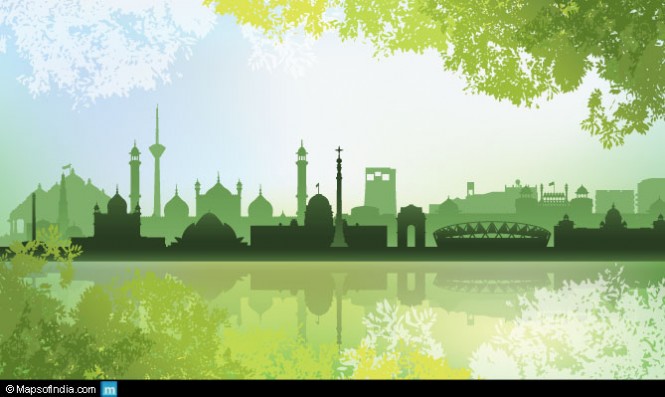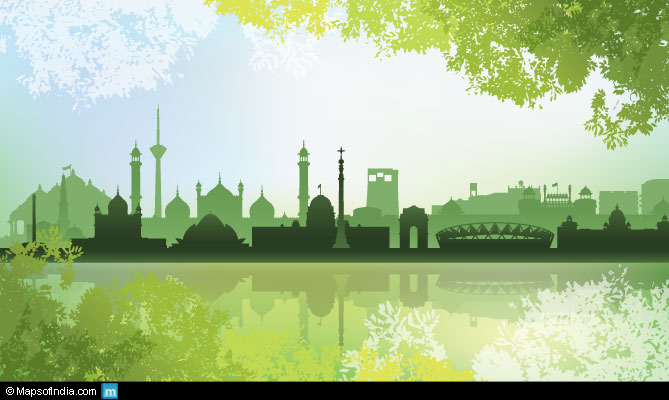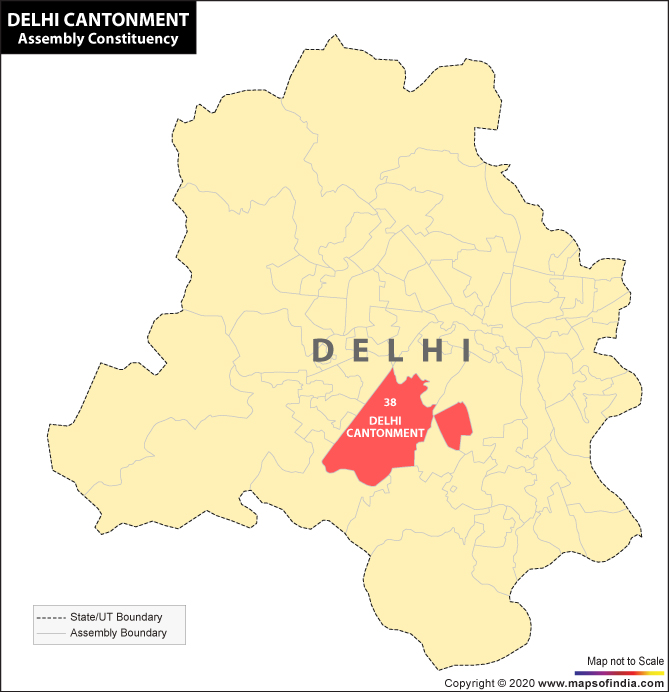 Delhi has the reputation of being one of the few developed cities worldwide that possesses a city forest. One of the fundamental objectives of development planning in India is to create a consolidated physical and social environment so that it improves the quality of life. The Delhi Development Authority (DDA) is presently preparing a new Master Plan of Delhi (MPD) 2021 incorporating comprehensive modifications in the earlier MPD 2001. The new plan has given emphasis on the increasing population of the Capital city along with its changing requirements.
Delhi has the reputation of being one of the few developed cities worldwide that possesses a city forest. One of the fundamental objectives of development planning in India is to create a consolidated physical and social environment so that it improves the quality of life. The Delhi Development Authority (DDA) is presently preparing a new Master Plan of Delhi (MPD) 2021 incorporating comprehensive modifications in the earlier MPD 2001. The new plan has given emphasis on the increasing population of the Capital city along with its changing requirements.
However, the large-scale, fast urbanization in Delhi has led to tremendous pressure on the physical environment of Delhi, with a serious negative impact on the green cover. The built-up area in Delhi and NCR has increased by 34.6% during 1999 to 2012, which was at the expense of green areas and water bodies. According to urban planners and environment analysts, the city development plan-2021 has significantly ignored to a great extent environmental protection for the sensitive areas like the Aravallis and river Yamuna and other water beds.
Delhi’s green cover areas
The main natural and green features of Delhi are river Yamuna and the Aravalli Hills. Yamuna covers about 48 km of the city. Aravalli Hills in Delhi starts from Delhi University campus in the north to the border of NCT in the south. This area is also known as the Ridge area of Delhi, part of which has been referred as Reserved Forest. There are four major parts of the Ridge area, making a total of about 7,784 Ha:
- Northern Ridge (87 Ha.)
- Central Ridge (864 Ha.)
- South Central Ridge (633 Ha.)
- Southern Ridge (6200 Ha.)
According to a survey made in 2011, there are 20,000 small, medium and big parks and gardens in Delhi under district parks, city parks, neighbourhood parks, community parks, five ridge areas, including the Reserved forest, 40 city forests, two bio-diversity parks and other green belts. The green cover also includes open space having small plantation in the residential as well as the large complexes like JNU, IARI, Delhi University Complex, President’s Estate and plantation along open spaces, roadside and drains.
Causes of reduction of green cover
It is sad to say that this green cover of Delhi has been used for developmental purposes as a result of which there has been degradation of the ecological balance of the city. A large portion of this green belt has been used for the development of malls, hotels, roads etc. without the much-needed environmental clearances. Active mining in the nearby areas has transformed the landscape. Habitations along the edge of the ridge have also put pressure on the area’s biodiversity. Some major causes of the reduction of green belt in Delhi are:
- Rapid urbanisation
- Expansion of roads
- Illegal mining
- Expansion of landfill sites
- Expansion of residential and commercial buildings
- Conversion of wastelands, agricultural land, green areas and water bodies
- Growth of industries and factories etc.
Statistical facts and figures
Rapid urbanization has taken a toll on the green cover in Delhi. Delhi is still the greenest city in the NCR, when compared with its neighbouring cities like Noida, Gurgaon or Faridabad. At present 11.9% of Delhi is known to having some forest cover. In the National Capital Region, the dense forest cover has reduced by almost 40%. However, a marginal increase is seen in the growth of open forest areas, including shrubs and minimal plantation. According to a report published by the NCR Planning Board (NCRPB) on the basis of the Forest Survey of India (FSI), during the period between 2001 and 2011, the neighbouring districts of Delhi like Ghaziabad, Panipat, Alwar had shown a great reduction of their green cover. Comparatively, during the same period, Delhi reported an marginal increase in forest cover, which also included Gurgaon and Haryana. But, the green areas in Delhi as a whole have registered a dip of 22.5%. Green cover and water bodies, which covered almost 23% of Delhi’s area have been lost to development works in the NCR in just the last 10-12 years.
Efforts by the Government
To increase the green cover, there has been sustainable efforts by the Government like:
- Planting more and more trees on vacant lands. This is achieved through active participation of greening agencies and communities.
- Free distribution of saplings to RWAs, schools, NGOs and other citizen groups through nurseries of the Forest Department, mother dairy booths, petrol pumps, CNG stations etc.
- All gardens and parks in Delhi are being developed and maintained by Delhi Parks and Garden Society (DPGS). This is an autonomous body under the Department of Environment
- DPGS also provides financial aid to RWAs for parks and gardens’ maintenance.
- During the year 2011, a total of 14.5 lakh saplings were planted during the monsoon under “City Plants a Million Tree Campaign”, which was undertaken by various departments, organisations and agencies.
- Encouraging the green building design etc.
Effective steps to check erosion of green cover needed
It is very essential to come up with strict measures to stop further deterioration of lung spaces like the water bodies and the ridge in Delhi.
- It is necessary to rationalise the space standard of parks, gardens and play areas.
- Quality of open spaces needs to be improved.
- Necessary steps should be taken to reduce the energy consumption.
- Proper site selection and building orientation.
- More and more encouragement to rain water harvesting.
- The concept of green buildings need to be promoted.
- The Yamuna river bed needs to be properly developed to enhance its aesthetic appearance by expansion of green cover along the banks, developing river bed recharge and wetland development.
- Prevention of encroachments and prohibition of use of vacant spaces.
There has been a continuous move to save the ridge and the entire green cover of Delhi. The green cover in Delhi must be maintained and no further infringements should be permitted. It is necessary that there should be concerted effort by the Government, policy-makers, civil society and Delhi’s citizens to sustain and maintain its green cover through proper policies and campaigns.





